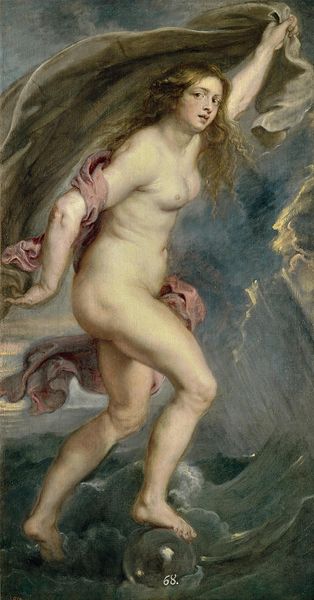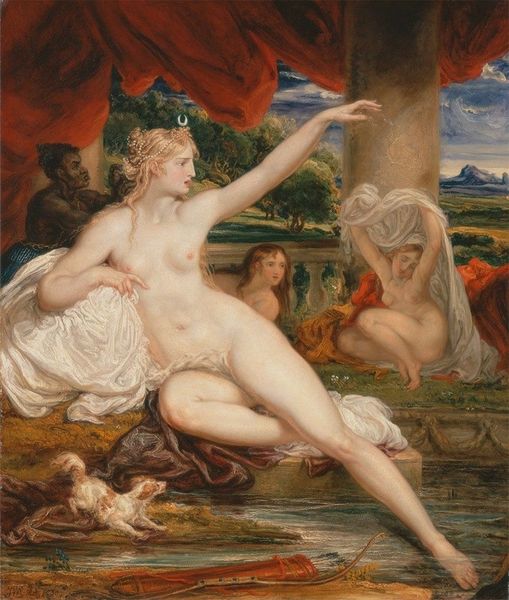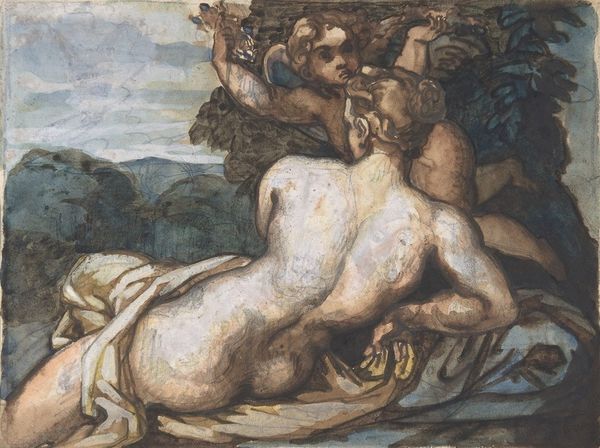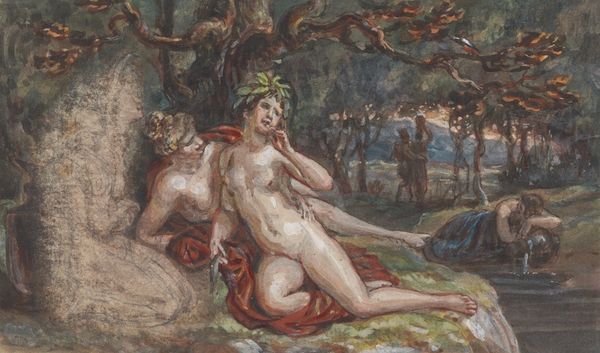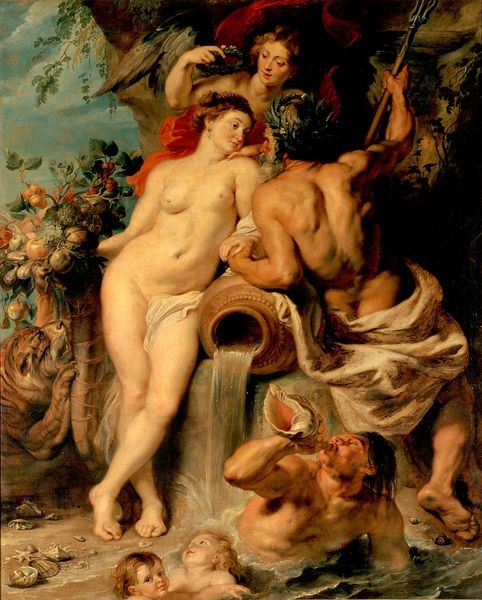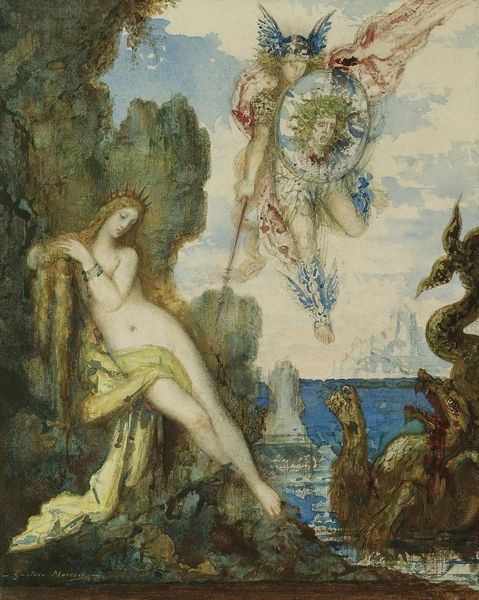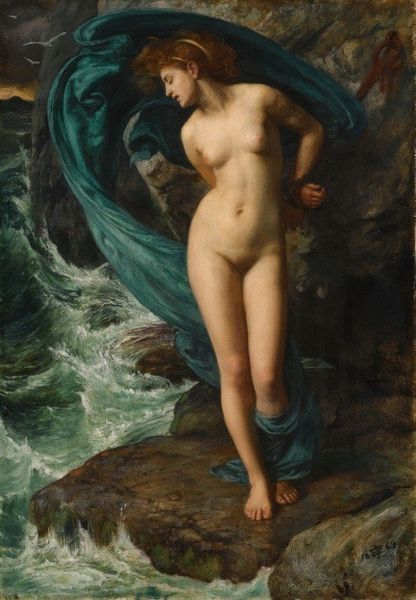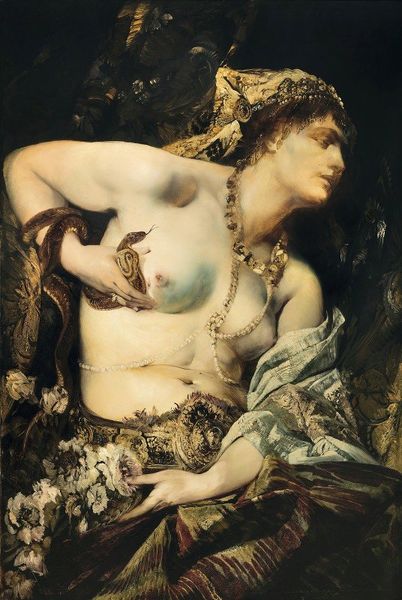
Copyright: Public Domain: Artvee
Henri Lehmann created this oil painting, La Source ou l’eau, in nineteenth-century France. It's a classical nude in a landscape, evoking both ancient Greek sculpture and the paintings of the Renaissance. Lehmann trained at the École des Beaux-Arts, the French Royal Academy of Painting and Sculpture. The nude was central to the academic curriculum, demonstrating an artist’s understanding of anatomy and ability to idealize the human form. The classical nude also served ideological purposes, embodying notions of beauty and order that affirmed the prevailing social norms. Lehmann received many official commissions. In the 1860s, he decorated the Palais de Justice in Paris. Art historians consult sources such as exhibition reviews, artists’ correspondence, and institutional records to understand how artworks were made and viewed in their own time. By considering the social and institutional context, we can begin to understand the role of art in shaping and reflecting cultural values.
Comments
No comments
Be the first to comment and join the conversation on the ultimate creative platform.
